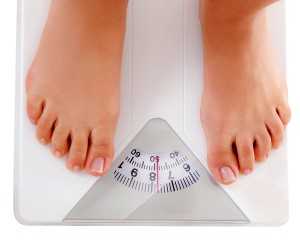Throughout my Personal Training experience, I have seen many cases of weight loss plateaus.
After altering the client’s diet, giving them a tailored exercise program, there is usually an initial success. Clients adapt to their new healthy eating habits and follow their exercise program and enjoy the benefits. Benefits include increased energy, better quality sleep, increased strength and fitness levels. For most it also includes an initial weight loss. The client gets so excited with their initial loss, it motivates them to stick to their eating habits and exercise plan convinced it will keep producing the same results.
A plateau occurs when you are in energy balance. At this time the calories you consume from food and drink equal the calories you expend as part of your resting metabolic rate and during physical activity. The human body is incredibly adaptive and will do its best to reach equilibrium (homeostatis). Many overweight people are at a plateau. They will say, “I’ve been 10kg overweight for years.” They start a fitness program where they eat less and exercise more which causes an energy imbalance and breaks their initial plateau. They start and will keep losing weight while there is a negative energy balance. But at some stage the energy balance equation balances again and causes another plateau. For example when you are 10kg lighter the energy cost of moving your body during everyday tasks and during exercise sessions is much less. So your total daily metabolic rate can drop, even when you are exercising regularly. When it falls to match your lower energy intake level, another plateau occurs. This can be extremely frustrating for the client. They have changed nothing but suddenly the weight simply doesn’t want to budge. For some, they think ‘what is the point?’ and start reverting back to their old ways, creating a vicious cycle.
It is difficult as a trainer to see your client put in the work, stick to their eating plan and not reap the rewards. There are tears, there is anger, there is desperation all over the clients face. As the trainer you try to explain the reasoning behind the plateau and that it is a normal part of weight loss. It is often hard for them to believe and understand. When weight loss plateau hits it is time to implement change. As their trainer I try to constantly add stimulus to the client’s program to keep ‘shocking’ the body, forcing it to keep adapting and thus hopefully breaking the plateau.
Some changes you can try if you encounter a plateau are as follows:
Change Your Exercise Routine
If you go walking a lot then try jogging, or swimming, or cycling — anything that will change the way your body is working. If you are doing low intensity cardio work, then try some high intensity exercise. You may need to also increase the duration and frequency of your workouts.
Change Meal Frequency
If you are eating three meals a day – start adding snacks in between (which may mean reducing the portion size of the main meals). Eating often is aimed to boost your metabolic rate.
Alter Macro-nutrient Intake
Although it sounds complicated, the idea is to change what you are eating. For example if you are eating a moderate diet that is higher in carbs – try eating less carbs and more protein. If you have a carbohydrate snack every day at morning tea time – change it to a protein snack. Whatever you are doing consistently – try mixing it up a bit.
Eat less sugar
You may have cut back on fat, but still be consuming too much sugar. Low-fat sweet snacks such as breakfast bars and fruit twists may seem a perfectly healthy option, but they are often are high in sugar. Swapping to fruit can offer calorie savings. Low-fat milkshakes, smoothies and fruit juices also have a healthy image, but are where calories can add up.
Drink less alcohol
Alcoholic drinks may be difficult to cut back on or give up, but may be necessary when you hit a plateau. A reality check on volume is important as alcohol is often underreported. You may have a couple of glasses of wine at dinner each night, but are you having two small (125mL) glasses of wine providing a total of 160 calories or four large (175mL) glasses giving around 450 calories.
Eat smaller portions
Are you eating too much of perceived healthy foods like bread, potatoes or pasta. You may need to downsize your dinner plate and cut out second serves. Keeping a food diary for a short time, is a great way to identify opportunities for change and is one of the best ways to be accountable for food intake. It may be just these small things that are causing the sticking point.
(please note the above suggestionsare simply that, suggestions. If you are concerned about your results or lack there of please consult a health professional)
The most important thing to do if a plateau occurs is to stay positive. Keep in mind and be proud of the changes you have made and focus on the benefits you have such as increased energy, strength, fitness etc. Don’t give up. The human body is an amazing (sometimes frustrating) thing. It is the only one you have so look after it.
